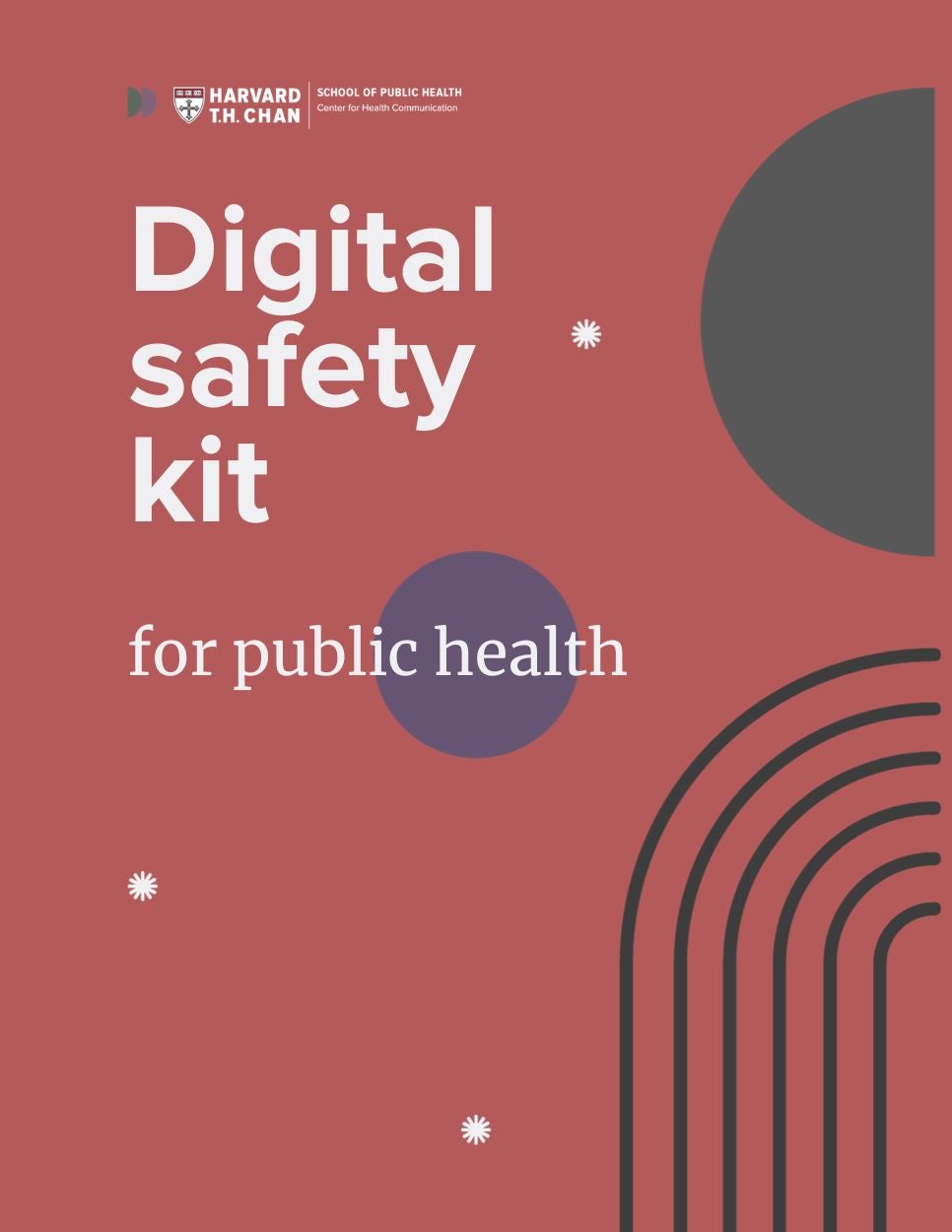The field of public health relies on visibility and community engagement, including online communication. Unfortunately, online harassment is growing, fueled by political division around public health. Ignoring online harassment can lead to its escalation into real-life harassment and spread to coworkers, family, and friends.
Moreover, online harassment hinders free and open sharing of public health information. This can harm health equity efforts and restrict diversity and inclusion within our field. It can also stall clinical practice and reduce the impact of research.
Public health agencies, universities, and hospitals must actively confront this risk to safeguard our workforce and advance health equity. This proactive approach will look different for each institution. Below, we outline overarching principles and recommend long-term steps your institution can take to foster a safer environment.
Help your workforce and students protect their tech
Technological tools can help protect institutional devices and employee/student professional data. Provide tools and help people understand how to minimize the risk of breached accounts and devices.
- Set up 2FA or physical log-in keys for institutional log-ins.
- Provide phishing protections on institutional email.
- Purchase enterprise accounts for password managers.
- Purchase enterprise accounts for a data removal service. Prominent options include DeleteMe and Incogni.
- Document a device encryption policy. Offer tools for employees and students to encrypt their devices.
Implement web and media policies
Public health institutions can safeguard data in ways that build trust with employees and students. Create policies that center employees’ and students’ data privacy concerns.
- Create opt-in policies for mentions by name, appearing in photos, and account tagging on institutional social media posts and websites.
- Create opt-in systems for appearing in institutional directories. Give students and employees a choice in the level of detail shared.
- Provide training for online security practices and create a policy around regular training.
- Default to opt-in systems for photographs at in-person events.
- Create a virtual event policy that gives attendees time to change their names, turn off their cameras, or leave altogether before recording starts.
- Ensure contact info from event registrations and meetings are accessible only on a need-to-know basis.
- Make students aware of how to place a FERPA Block to prohibit the release of their directory information.
Implement harassment policies
Emergency response can be more efficient if there are clear resources to draw on. Help employees and students understand the resources available to them in case of harassment.
- Create and share an institutional policy around bullying, discrimination, and online harassment, including how to escalate reports internally and request workplace/classroom accommodations.
- Create templates for public statements, reports to social media platforms, data removal requests, and internal announcements to prepare for future emergencies.
- Create a digital safety team so employees and students know who to turn to in case of online harassment.
- Create an emergency workflow to help people remove information from institutional websites in case of harassment.
- Create and share resources to help document abusive interactions and screen messages in case of harassment.
- Ensure your institution is ready to draw on a crisis communications expert in emergency situations.
- Ensure your institution is ready to draw on legal advice from professionals who understand state-specific laws on harassment and cyberbullying.
Implement social media policies
Social media policies can help promote emergency preparedness. Promote default practices and a professional culture that prioritize safety on social media.
- Provide training for social media and internet conduct on institutional accounts, as well as project- or lab-specific accounts.
- Maintain institutional social media accounts only where you have the resources to manage them in case of emergencies.
- Ensure you have an employee whose job responsibilities include surveying social media to proactively identify relevant disinformation campaigns, especially around areas of work focusing on health equity and marginalized communities.
Engage your workforce and students
Professional development opportunities can help employees and students reduce the amount of personal data they make available online. Support online professional communication and offer offline alternatives.
- Create offline opportunities for professional networking and development.
- Support offline networking and professional development opportunities specifically for people from underrepresented backgrounds in public health.
- Use institutional communication channels to highlight work against racism, ableism, classism, transphobia, homophobia, and other forms of systemic oppression.
- Give all employees and students access to institutional email addresses, phone numbers, and mailing addresses for use in conference registration, journal submission, etc.
- Provide graduating students with an email address to use during a transition period as they leave your institution.
The Digital Safety Kit was created by Sam Mendez for the Harvard T.H. Chan School of Public Health’s Center for Health Communication. It is designed to help you prevent and reduce the harm of online harassment in public health.




